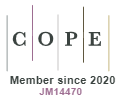Association between polymorphism of the 5HT-2A receptor gene and vasovagal syncope
DOI:
https://doi.org/10.5585/conssaude.v11n2.3098Keywords:
Síncope vasovagal, Polimorfismo genético, Genética.Abstract
Introduction: Vasovagal Syncope is a very frequent pathology; however, its physiopathology is not well known. Objectives: To verify the association between polymorphism T102C 5HT-2A and vasovagal syncope. Methods: This case-control study included 106 patients, selected between March 2007 and December 2008. Fifty-three patients with history of syncope and positive head-up tilt test were compared to 53 patients without history of syncope, in relation to the presence of the polymorphism. Results: Of the patients studied, 11 (22%) of the case group and 4 (8%) of the control group had familiar history in first degree of syncope (p=0.03). In the analysis of the logistic regression, the homozygote 102C (OR 4.54; IC 95%: 1.14–0.97; p= 0.02) and the familiar history (OR 2.86; IC 95%: 0.97 – 8.39; p=0.03) were independently associated to a higher chance of developing vasovagal syncope. Conclusions: Patients with familiar history of syncope and homozygote 102C have more chance of presenting vasovagal syncope.Downloads
Downloads
Published
2012-07-11
How to Cite
1.
Lorenzini E, Markoski MM, Biason L, Barbisan JN, Frazzon APG. Association between polymorphism of the 5HT-2A receptor gene and vasovagal syncope. Cons. Saúde [Internet]. 2012 Jul. 11 [cited 2025 May 5];11(2):211-6. Available from: https://periodicos.uninove.br/saude/article/view/3098
Issue
Section
Basic Sciences
License
Copyright (c) 2012 ConScientiae Saúde

This work is licensed under a Creative Commons Attribution-NonCommercial-ShareAlike 4.0 International License.
Views
- Abstract 214
- PDF (Português (Brasil)) 195







